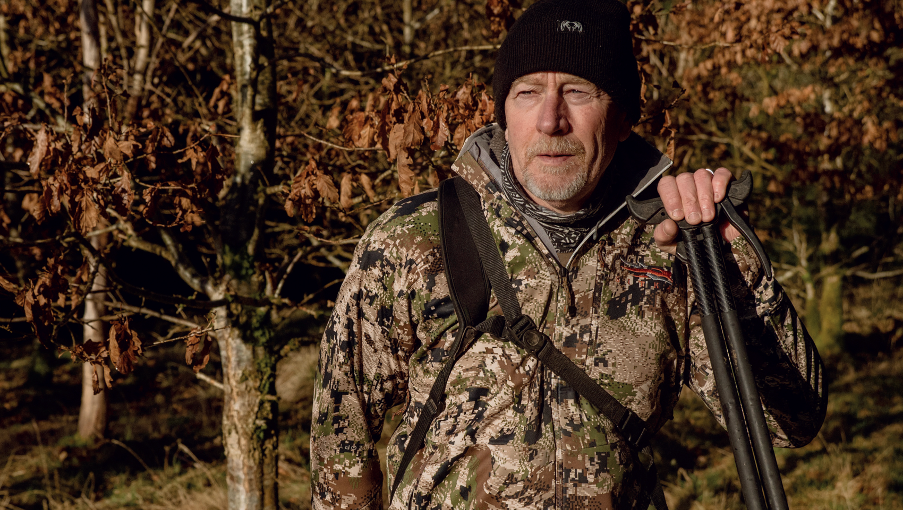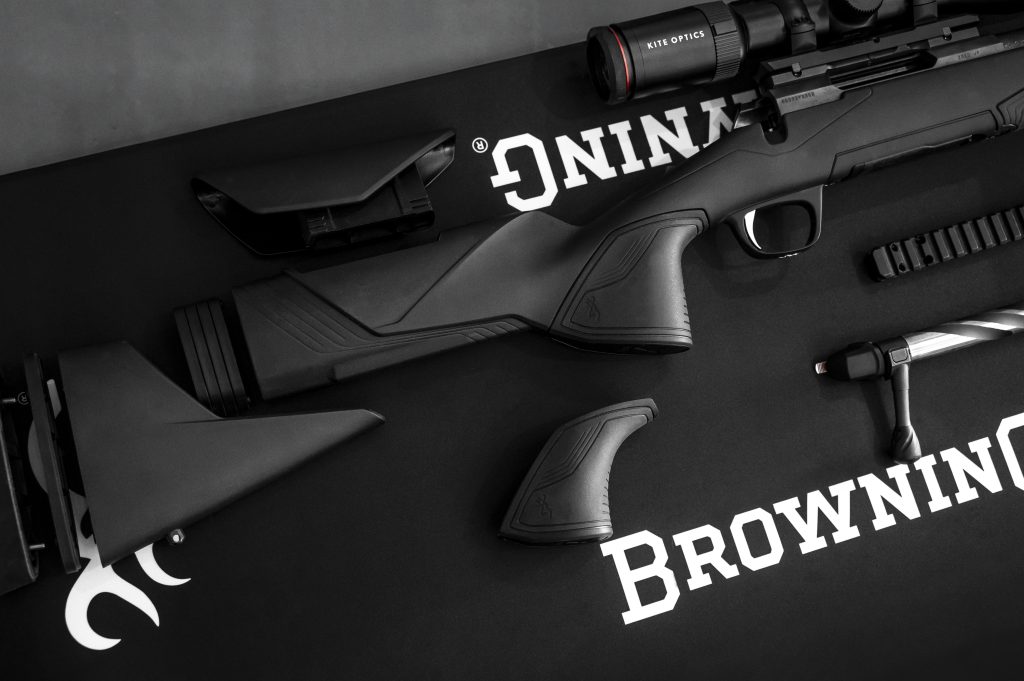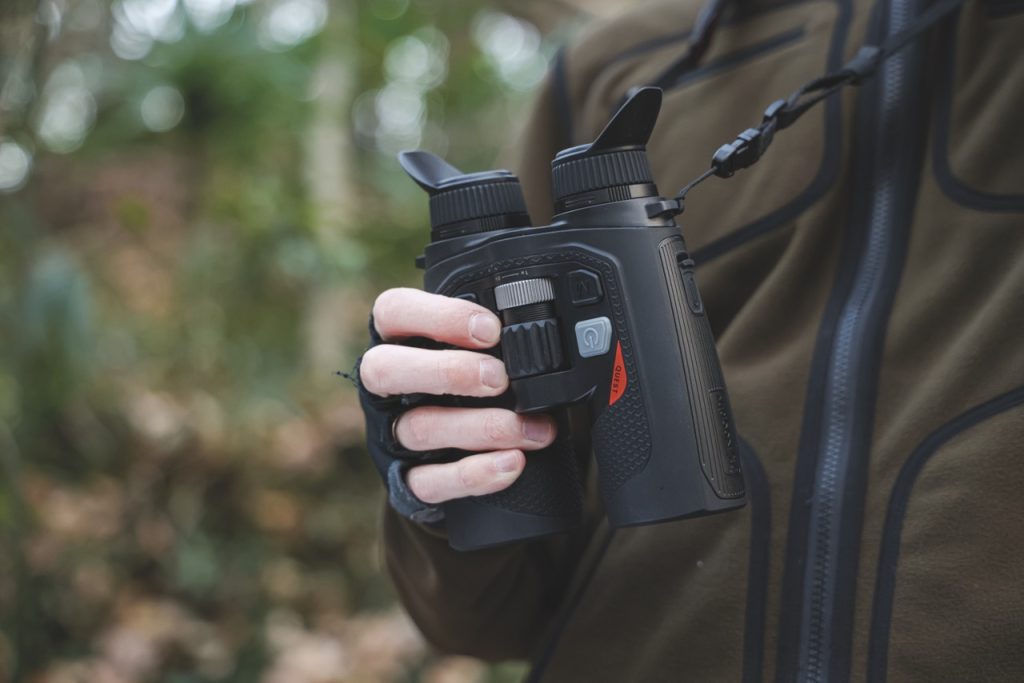Win CENS ProFlex DX5 earplugs worth £1,149 – enter here
Rustle up the best stalking jackets
Top of the wish list for the ideal outerwear is quiet fabric; you don’t want your stalking coat to alert the deer to your presence, says Chris Dalton

Stalking clothing – specifically noisy jackets – have been the subject of several conversations lately. The topic first arose while I was guiding a client who is new to stalking. He had bought a jacket for the trip from a well-known company, which turned out to be rather noisy when he moved. The crispy rustling of his outerwear became increasingly apparent over our two woodland outings making the stalk that little bit trickier.
The next day he went out with a different guide who made similar observations and quietly mumbled something about being followed by a box of cornflakes. At the post-stalk debrief, the guest took a decent amount of friendly banter for his outfit, which was perhaps a little unfair given his newness to the game, but to his credit he took it all in very good humour.
I am currently testing a range of shooting gear for Hollands Country Clothing and, on my way back from the Great British Shooting Show, I was also sked to test and share my thoughts on some of the latest stalking jackets for another client. So for the past few weeks I have been stalking on my own or guiding, wearing an assortment of cutting-edge jackets.
Serious improvements have been made in modern years in stalking clothing, and we are now light years ahead of the ex-military apparel and wax jackets that were once the norm in the sector. These items have been replaced by a daunting array of technical stalking clothing with varying degrees of breathability, water-resistance and camouflage. Perhaps I am a traditionalist but I still prefer solid colours and usually opt for shades of dark green or olive, but that is personal preference.
I had four coats to test and the first two were from Stoney Creek, supplied in technical patterns. Stoney Creek originated in New Zealand, so its clothing is designed to cope with some pretty harsh and changeable conditions. This is just as well, as on their first outing the jackets were exposed to the latest of the named storms to hit the UK. My stalking ground in the south-west of Scotland caught the worst of it with rain of biblical proportions.
Despite the deluge I remained dry throughout, so both jackets validated their claims of being waterproof. Both were in Tuatara camouflage, which is designed to mimic brighter forest colours and the softer, duller tones of an alpine environment. If you aren’t a camo sort, both jackets are also available in solid single colours.
Stoney Creek Suppressor
RRP £299.99
The Suppressor jacket has a built-in, non-removable hood with a wired peak. The hood was very welcome in the driving rain and the fleece-lined collar was comfortable and warm. The jacket has a full-length zip, which doesn’t let the wind through, and its raglan sleeves don’t restrict movement. It is made with a three-layer system, comprising an outer layer, a hydrophilic membrane and a lining. This makes it fully water and windproof and I was particularly impressed with the well-made internal seals.
Other features include silicone shoulder dots which help stabilise your rifle or pack, large well-positioned front pockets, which can be clipped open, and an internal zipped pocket. At the back the jacket is long enough to give good protection over the seat and a double storm flap ensures your bottom stays dry even if sitting on wet ground. This jacket would be ideal for a high seat or static vigil, but not ideal for stalking on foot for anything other than extreme weather days.
Stoney Creek Frostline
RRP £209.99
The Frostline is available in the slightly different Tuatara camo alpine livery and, while I’m not a fan of camo in general, I did quite like the subtle colours used here that blended well with the terrain I was stalking. Again, the jacket has a full-length zip, but the garment was lighter and designed for the active hunter operating in higher, cooler environments.
The lighter weight and more breathable body is very much what I naturally tend towards when selecting my own clothing. When paired with a simple base layer, it delivered the perfect combination of comfort and weatherproofing.
Technically, the Frostline boasts an air-permeable membrane inside a three-layer Frostline fabric and an adjustable, non-removable hood with a double storm flap. I like the positioning of the two angled front pockets, which are fleece-lined and kept my hands toasty warm on a bitterly chilly day.
The Frostline jacket also features two internal pockets for added storage and low-profile cuffs, plus the same useful silicone shoulder dots for backpack or rifle
Sikta Jetstream
RRP from £350
Sitka sent me its Jetstream jacket which is the Montana brand’s bestseller. The one I had on test was in its Optifade pattern but there are several other options including solid colours, which as I’ve said would be my preference.
What struck me immediately was the weight of the jacket at a mere 1lb 10oz. It was super-comfortable to wear and the soft-shell texture makes it particularly quiet when woodland stalking in close quarters to your quarry.
It is becoming increasingly important these days to demonstrate sustainability and the Jetstream is fashioned in part from recycled polyester, which it bonds to a Gore-Tex wind-stopper. Because of the lightweight feel, I was initially a little dubious about its claimed warmth and wind-stopping capabilities. However, while wearing it in sharp northerly winds, I was very pleasantly surprised, as it delivered admirably.
It is well served by pockets and I like the zipped ventings that allow you to open them and cool down on the hill ascent into your stag. The integral hood is well thought out and can be drawn in to maintain good peripheral vision, while the taped seams provide full weather protection. All round this is a well-made jacket. I personally prefer a little more overall length but for woodland stalking this is a cracker. Its breathability and comfort would also work equally well on the open hill when covering long distances in cool winds.
Seeland Chaser
RRP £229.99
The Seeland Chaser jacket is the only one I tested in a mid-brown solid colour. The outer fabric is soft and therefore quiet when stalking in woodland as you brush against cover. It is comfortable and warm, and I like the fact that the hood is detachable; often in dry and milder conditions I want the option to remove the hood. There are four well-positioned front pockets, with taped seams and zips, along with deep internal pockets.
I loved the touch of the integral, detachable lens cloth in one of the breast pockets; this shows a wonderful attention to detail and it’s genuinely useful. There are anti-slip pads at the shoulders, which prevent rifle sling creep and the jacket is breathable, with zipped vents for added air flow. The Seetex membrane with taped seams ensures the jacket is fully weatherproof but still allows the egress of moisture. Finally, the jacket can be incrementally adjusted to fit at both the waist with a drawstring, and the cuffs with Velcro fastenings.
In conclusion
Faced with such a huge choice of suppliers, my advice is to select from one of the well-known hunting clothing companies that specialise in stalking gear. Ensure that you get a good fit because there is little sense in investing in quality clothing if it does not fit you properly. I, and many before me, will have fallen foul of rushing out and buying clothing on impulse, which turns out to be unfit for purpose.
Unless you have used a particular company previously, sizing can be tricky, particularly with mail-order clothing. I am a slim build and sit between medium and large in tops, depending on the generosity of the fit. Ideally, when opting for a new brand, I would try to get to a store or one of the game fairs where you can try before you buy.
Related Articles
Get the latest news delivered direct to your door
Subscribe to Shooting Times & Country
Discover the ultimate companion for field sports enthusiasts with Shooting Times & Country Magazine, the UK’s leading weekly publication that has been at the forefront of shooting culture since 1882. Subscribers gain access to expert tips, comprehensive gear reviews, seasonal advice and a vibrant community of like-minded shooters.
Save on shop price when you subscribe with weekly issues featuring in-depth articles on gundog training, exclusive member offers and access to the digital back issue library. A Shooting Times & Country subscription is more than a magazine, don’t just read about the countryside; immerse yourself in its most authoritative and engaging publication.







